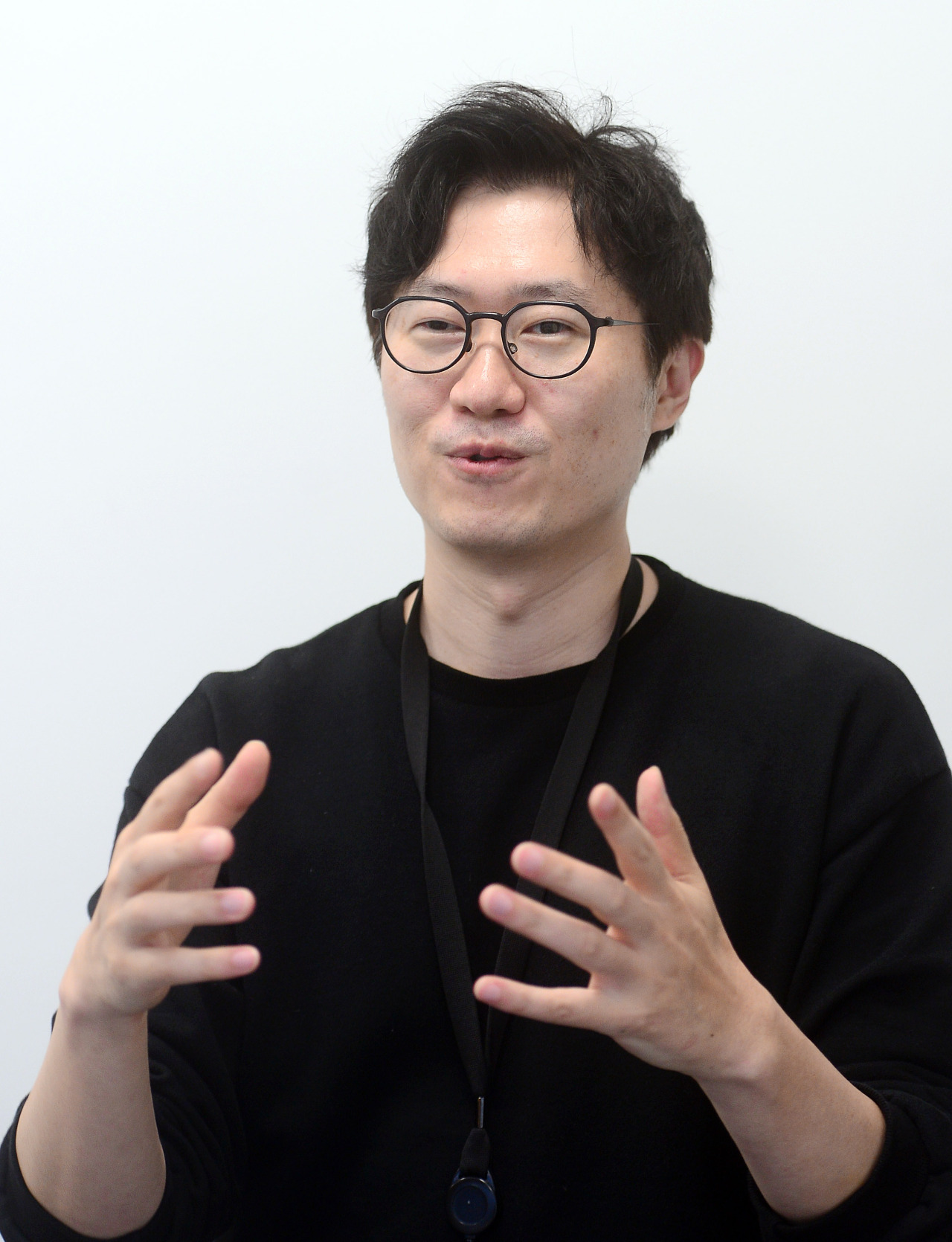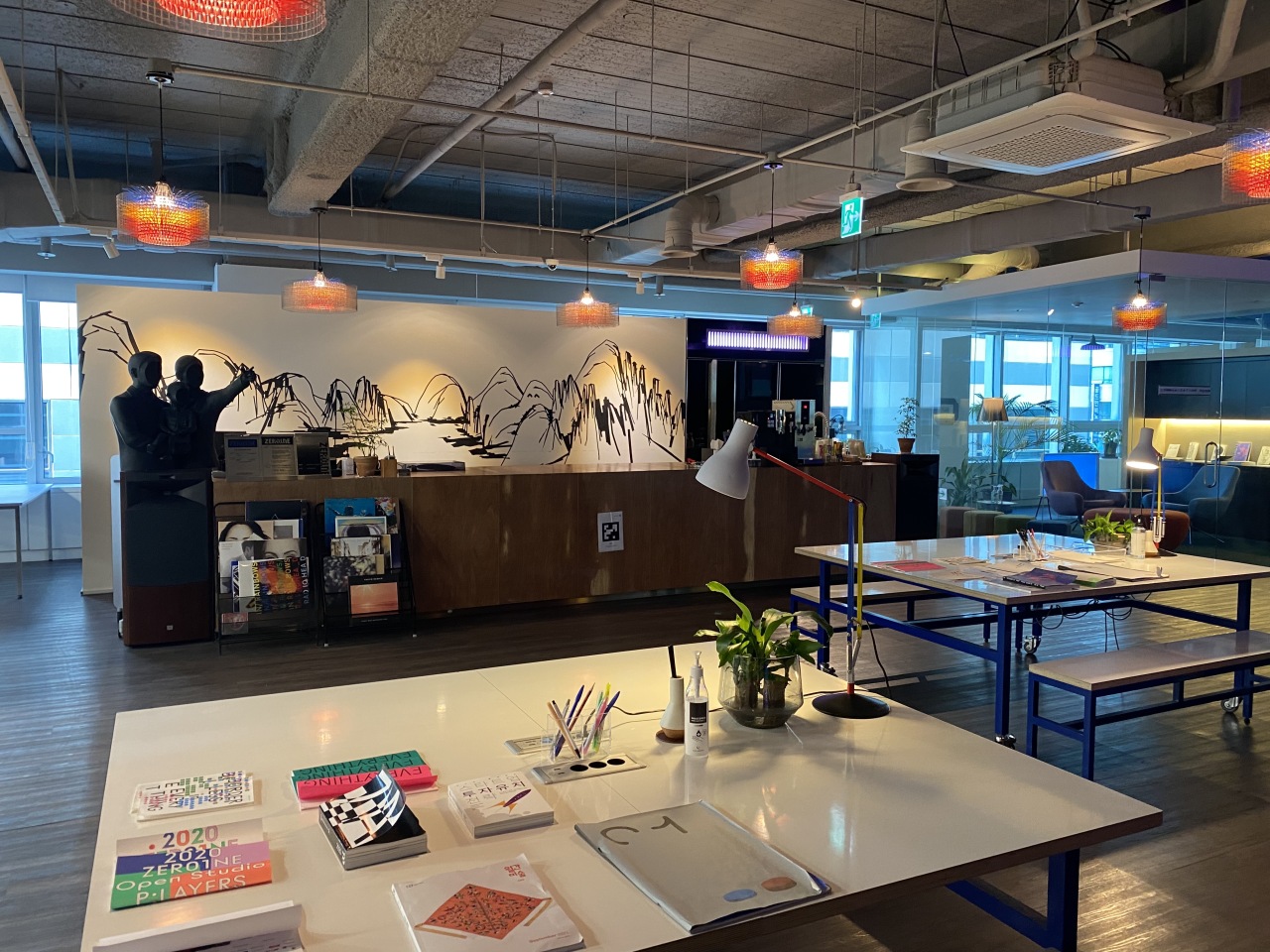[Herald Interview] ‘Designing user experience key to business success’
Hyundai’s creativity incubator chief says design goes beyond a product’s aesthetics
By Jo He-rimPublished : Sept. 23, 2021 - 16:29

Technology is advancing at a dizzying speed, bringing future mobility closer to us. Scenes of driverless vehicles cruising down smart roads and up in the skies no longer sound like science fiction.
Against such a backdrop, the idea of design should go beyond just making products look good. It should also be about planning the experience of users, says Kwon Young-jin, who leads Hyundai Motor Group’s Zer01ne Playground, an open innovation platform.
“Hyundai Motor Group seeks to reposition itself as a mobility solutions provider, so we are studying what kind of experiences new technologies can create for users,” he said in an interview with The Korea Herald and the Herald Business, ahead of the 11th Herald Design Forum slated for Oct. 14.
“We believe that the ability to ‘design’ that experience will determine our future success, or the sustainability of our business.”
To break away from conventional ways of thinking and with a goal to “foster creativity” for actual changes that can affect people and the society, Hyundai launched Zer01ne in 2018.
Zer01ne consists of mainly two teams. The Accelerator is a startup incubator, and the Playground is the open innovation platform that connects experts of various fields to discuss ideas and solutions for the future, Kwon explained.
“At Zer01ne Playground, we gather unlikely combinations of artists, scientists, architects and designers, whom we call ‘creators’ to make real changes for consumers and the society,” Kwon said.
Most of the creators have not worked in the field of mobility before. In fact, they have not had any connections to it whatsoever. And that is good, because they bring in a completely different point of view, Kwon said.
“To prevent roadkill and accidents, we would think of developing new alert systems for drivers. But some creators, without any background in the mobility industry, would tell us, why not approach it from the perspective of the animals?” he said.
That led them to launch research into developing ways to alert animals in advance, using frequency waves that can be heard only by specific types of animals that come near roads with traffic.
Against such a backdrop, the idea of design should go beyond just making products look good. It should also be about planning the experience of users, says Kwon Young-jin, who leads Hyundai Motor Group’s Zer01ne Playground, an open innovation platform.
“Hyundai Motor Group seeks to reposition itself as a mobility solutions provider, so we are studying what kind of experiences new technologies can create for users,” he said in an interview with The Korea Herald and the Herald Business, ahead of the 11th Herald Design Forum slated for Oct. 14.
“We believe that the ability to ‘design’ that experience will determine our future success, or the sustainability of our business.”
To break away from conventional ways of thinking and with a goal to “foster creativity” for actual changes that can affect people and the society, Hyundai launched Zer01ne in 2018.
Zer01ne consists of mainly two teams. The Accelerator is a startup incubator, and the Playground is the open innovation platform that connects experts of various fields to discuss ideas and solutions for the future, Kwon explained.
“At Zer01ne Playground, we gather unlikely combinations of artists, scientists, architects and designers, whom we call ‘creators’ to make real changes for consumers and the society,” Kwon said.
Most of the creators have not worked in the field of mobility before. In fact, they have not had any connections to it whatsoever. And that is good, because they bring in a completely different point of view, Kwon said.
“To prevent roadkill and accidents, we would think of developing new alert systems for drivers. But some creators, without any background in the mobility industry, would tell us, why not approach it from the perspective of the animals?” he said.
That led them to launch research into developing ways to alert animals in advance, using frequency waves that can be heard only by specific types of animals that come near roads with traffic.

One of the ongoing projects at Zer01ne Playground is developing a self-driving wheelchair for the disabled.
While the development of the auto industry over the past decades has brought so many benefits to those without disabilities, it has not given much attention to the mobility rights of the disabled, Kwon said.
Following a suggestion from one of its creators, the platform has completed building a prototype of its first self-driving wheelchair, joining hands with other organizations for technology development. The prototype has undergone a test drive at a museum and a hospital.
“It is not that Hyundai Motor Group is tapping into the wheelchair market (for profit), but from the project we gained data on various user experiences that were not obvious to us before,” Kwon said.
“We are a mobility company, but we were not as aware of the difficulties the disabled would have in their movements. We are also experts in roadways, but not in areas where cars cannot go.”
Although the autonomous wheelchair uses the same lidar and ultrasonic sensors used in cars, its core task differs significantly. Wheelchairs have to navigate within buildings, not just on roads, and it should consider both the safety and comfort of the person on the chair.
The project also allowed them to understand the potentials of self-driving technology, for instance, how it could be used for robots or for those with hearing disabilities.
At Playground, creators are also looking into fun ideas such as projecting an image of surfing on the ocean onto the window when the driver goes over a speed bump on the road.
For various projects aimed at nurturing creativity, Zer01ne Playground provides funds of up to some 50 million won ($42,400).
While the projects it is funding do not bring immediate profits, Kwon said Zer01ne Playground seeks to create values that can benefit the society as a whole, and also support the company’s transformation, from a conventional auto manufacturer to a mobility solutions provider.
“Making a product look stylish is only one side of design. Design has always been about coming up with a solution to a problem,” Kwon said.
“Now, we believe the scope of design has expanded, to identifying what a problem is. And designing the user experience of a technology, or a product before they are presented to consumers, is what companies should work on.”
While the development of the auto industry over the past decades has brought so many benefits to those without disabilities, it has not given much attention to the mobility rights of the disabled, Kwon said.
Following a suggestion from one of its creators, the platform has completed building a prototype of its first self-driving wheelchair, joining hands with other organizations for technology development. The prototype has undergone a test drive at a museum and a hospital.
“It is not that Hyundai Motor Group is tapping into the wheelchair market (for profit), but from the project we gained data on various user experiences that were not obvious to us before,” Kwon said.
“We are a mobility company, but we were not as aware of the difficulties the disabled would have in their movements. We are also experts in roadways, but not in areas where cars cannot go.”
Although the autonomous wheelchair uses the same lidar and ultrasonic sensors used in cars, its core task differs significantly. Wheelchairs have to navigate within buildings, not just on roads, and it should consider both the safety and comfort of the person on the chair.
The project also allowed them to understand the potentials of self-driving technology, for instance, how it could be used for robots or for those with hearing disabilities.
At Playground, creators are also looking into fun ideas such as projecting an image of surfing on the ocean onto the window when the driver goes over a speed bump on the road.
For various projects aimed at nurturing creativity, Zer01ne Playground provides funds of up to some 50 million won ($42,400).
While the projects it is funding do not bring immediate profits, Kwon said Zer01ne Playground seeks to create values that can benefit the society as a whole, and also support the company’s transformation, from a conventional auto manufacturer to a mobility solutions provider.
“Making a product look stylish is only one side of design. Design has always been about coming up with a solution to a problem,” Kwon said.
“Now, we believe the scope of design has expanded, to identifying what a problem is. And designing the user experience of a technology, or a product before they are presented to consumers, is what companies should work on.”








![[Today’s K-pop] BTS pop-up event to come to Seoul](http://res.heraldm.com/phpwas/restmb_idxmake.php?idx=644&simg=/content/image/2024/04/17/20240417050734_0.jpg&u=)

![[Graphic News] More Koreans say they plan long-distance trips this year](http://res.heraldm.com/phpwas/restmb_idxmake.php?idx=644&simg=/content/image/2024/04/17/20240417050828_0.gif&u=)






![[KH Explains] Hyundai's full hybrid edge to pay off amid slow transition to pure EVs](http://res.heraldm.com/phpwas/restmb_idxmake.php?idx=652&simg=/content/image/2024/04/18/20240418050645_0.jpg&u=20240419100350)

